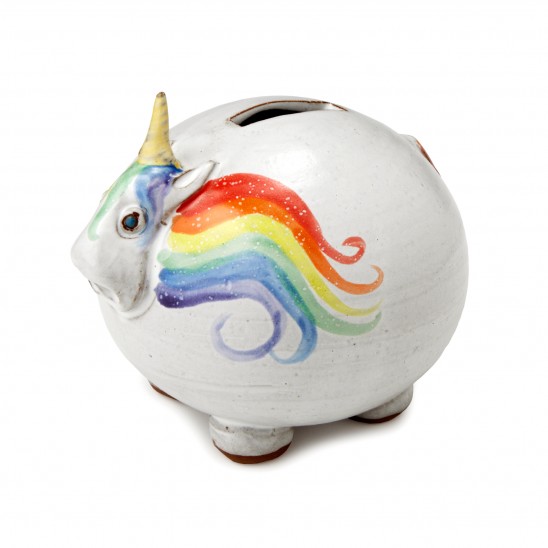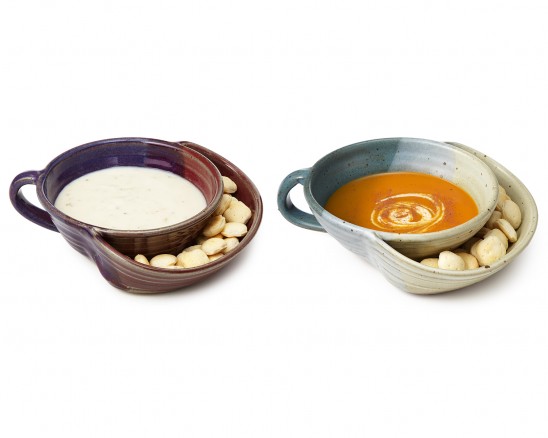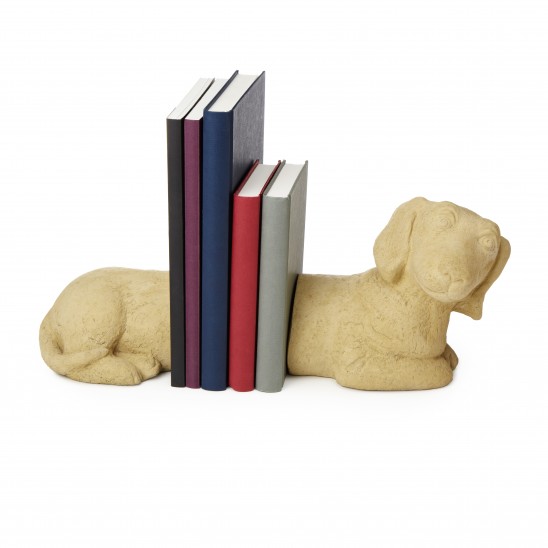It was a hard trip for the Pilgrims. It wasn’t their plan to arrive in the New World in November, right as winter was coming in and before they could get crops planted. They had a leaky ship and other repairs to thank for that. It also was not their intention to settle in Massachusetts. In fact, they were trying to get to the Colony of Virginia, to the south. The reason they decided to land rather than just heading on south? Beer. On a long sea voyage, it wouldn’t take long for barrels of water to become undrinkable. Beer, however, remained potable for the long haul. And not only was it needed for the new colonists on the trip over, but a reserve of beer was necessary for the crew of the ship as they made their way back to England. So when the beer supply ran low, the captain hit the brake, pulled over at Plymouth Rock, and insisted that the time had come for his passengers to disembark. That is probably not what they were giving thanks for.
Some might call the debate between creamy New England clam chowder and tomato-based Manhattan clam chowder a bit heated. The creamy (original) clam chowder has been around since at least the 1830s and the recipe has gone relatively unchanged. However, a few decades later, a burgeoning Italian population in New York City began using tomatoes in their chowders, thus thinning it out and giving it a red hue. Following this, chowder was added to the long list of things New Yorkers and Bostonians argued about for quite some time until a group of hardened New Englanders had had enough. In 1939, a bill was introduced in the Maine legislature that made it illegal to add tomatoes to the storied recipe. Whether a Maine restaurant could feasibly get fined today for serving up chowder Manhattan-style is debatable. However, you’d be hard-pressed to find a chowder lover from Portland to Providence who wouldn’t be at least a little irked.
You know all those times when seeing a newborn makes you say, “Oh, what a sweet baby! I could just eat you right up!” Or that inclination to pop those cute little toes into your mouth, or to blow a raspberry on that roly-poly tummy? Research suggests that you do those things because babies make you subconsciously think about food. It’s the smell that does it. The scent of a newborn baby activates the area of the brain that controls food cravings, and prompts a release of the feel-good chemical dopamine. Fortunately, this hunger doesn’t drive us to literally eat our young. Instead, it gives us a craving to nurture, feed and protect those precious little dumplings.

You’d think that the option to effortlessly push your groceries in front of you rather than lugging them in a basket would be a no-brainer. However, when the first conventional shopping cart was invented in 1936, people were not very into it. Sylvan Goldman, a storeowner in Oklahoma realized that shoppers were heading for the check out line the second their baskets got too heavy—not a very good pattern when you want customers to buy more. To combat this, he fashioned a cart on wheels and began offering them to his customers. Much to his dismay, only the elderly customers were interested in such a convenience. The men were too proud to admit they needed help and the women associated the carts on wheels with baby buggies, which they were sick of pushing around. That’s when the oldest marketing trick in the book came in handy—Goldman hired attractive men and women to push around carts and pretend to shop. When real customers came through the door and refused a cart, the (also attractive) cart wrangler at the entrance answered, “Why not? Everyone else is using them!” Peer pressure wins again!
 Nope. So inconsiderate! While your freeloading finned friend might not have remembered to buy you a birthday cake, he does remember a little more than common knowledge gives him credit for. It’s been said that goldfish have a memory span of three seconds, meaning every swim by the decorative mermaid is a new and exciting adventure in underwater flirtation. However, according to numerous studies, this is a myth. Jamie Hyneman from Mythbusters challenged his goldfish to recognize color patterns and run an underwater obstacle course. A month later, the fish remembered the prompts, completing it easily without any help from Hyneman. A 2003 study at the School of Psychology at the University of Plymouth trained fish to push a lever for food. When the lever was fixed to only work for one hour a day, the fish learned to only push it at the correct time, not even bothering with it for the rest of the day. So with that in mind, are you going to be a little more careful about what you say in front of Goldie? Ix-nay on the Ushi-shay.
Nope. So inconsiderate! While your freeloading finned friend might not have remembered to buy you a birthday cake, he does remember a little more than common knowledge gives him credit for. It’s been said that goldfish have a memory span of three seconds, meaning every swim by the decorative mermaid is a new and exciting adventure in underwater flirtation. However, according to numerous studies, this is a myth. Jamie Hyneman from Mythbusters challenged his goldfish to recognize color patterns and run an underwater obstacle course. A month later, the fish remembered the prompts, completing it easily without any help from Hyneman. A 2003 study at the School of Psychology at the University of Plymouth trained fish to push a lever for food. When the lever was fixed to only work for one hour a day, the fish learned to only push it at the correct time, not even bothering with it for the rest of the day. So with that in mind, are you going to be a little more careful about what you say in front of Goldie? Ix-nay on the Ushi-shay.

Not according to an eye witness account. Specifically, the account of Marco Polo, who discovered actual, living unicorns during his world travels. He was less than impressed. It turns out that unicorns did indeed have a single horn jutting from their foreheads, but in general were, “ugly brutes to look at.” He described them as, “scarcely smaller than elephants. They have the hair of a buffalo and feet like an elephant’s… They have a head like a wild boar’s.” Popular understanding at the time suggested that unicorns would be creatures of such purity that they could be tamed only by the fairest virgin damsels. Polo, however, found that, “they spend their time by preference wallowing in mud and slime.” Scarcely the stuff that dreams are made of. Perhaps that’s the reason why they were renamed. Today you can find unicorns in almost any zoo, but they have been re-branded as “rhinoceros.”
Despite the pristine lines and immaculate thinking behind his remarkable artworks, Michelangelo Buonarroti was the quintessential uncouth genius and cared little about the tidiness of his studio or even his personal hygiene. According to biographer Peolo Giovio, “His domestic habits were incredibly squalid, and deprived posterity of any pupils who might have followed him.” The Renaissance master also rarely bathed, and often slept fully clothed, down to his boots. In fact, while sculpting his marble masterpiece David in the early sixteenth century, he didn’t take his boots off for two years straight!
That unmistakable aroma you get when you open a well-loved tome is a result of chemistry. As a book ages, the glue, paper, and ink begin to break down and release volatile compounds. A study in 2009 found that the chemical makeup of a book’s aroma consisted of hundreds of these compounds, giving it an organic mustiness with grassy notes. One main compound is lignin, which is present in all wood-based paper. Lignin is closely related to vanillin, which is what lends that faint, comforting smell of vanilla. No wonder curling up with an old book and a cup of tea sounds so inviting.





